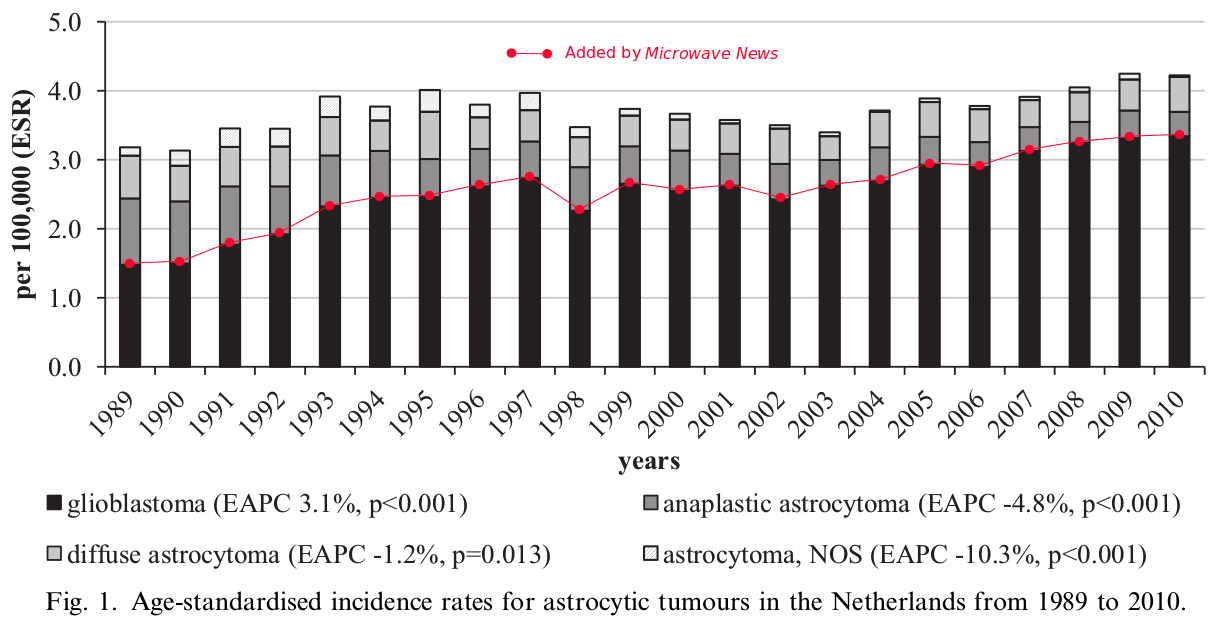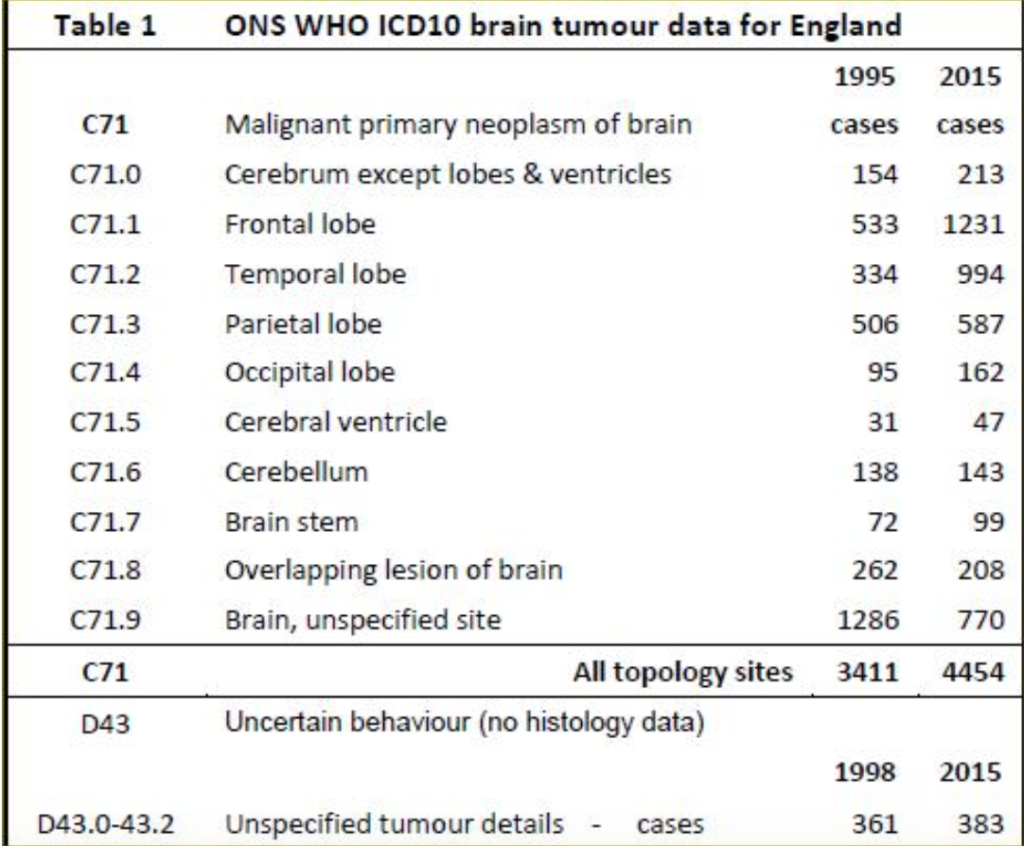Dr. Weeks’ Comment: The most common cancer your 15-19 year old will get is a brain cancer called glioblastoma. But wait, what is any young person doing getting cancer? Well, have they been HOLDING a cell phone much less putting it up against their brain for hours a day? If you have read these pages for the past decade you would have learned the 5/8th of an inch rule. The manual for a common cell phone warns you NEVER to have the phone on and closer than 5/8th of an inch to your body: i.e. never touch it when it is turned on.
It is best to prevent cancer but if you get glioblastoma, eat anti-inflammatory seeds.
My thanks to Paul Doyen for sending me this report and for keeping our attention on this Plague of the 21st century.
Gliomablastomas Increase Worldwide, Most Common Cancer in 15-19 year olds
Glioblastoma Multiforme (GBM), a type of glioma, which is the most aggressive form of brain cancer and a cancer affecting 3 in 100,000, has increased in incidence. It is the same type of cancer which killed Senator John Mc Cain, Ted Kennedy, Johnnie Cochran, and which has afflicted Maria Menounos’ mother.
- In a study done in England looking at GBMs from 1995-2015 https://www.hindawi.com/journals/jeph/2018/7910754/ frontal lobe GBM increased from 533 to 1231, statistically significant increase in primary GBM tumours were seen, especially in frontal and temporal lobes of the brain.temporal lobe GBM increased from 334 to 994. The increase was attributed to an environmental factor
Microwave News. “Aggressive Brain Tumors on the Rise in England.” March 25, 2018. http://microwavenews.com/news-center/gbms-rising-uk
Source: Alasdair Philips via Microwave News.
- In the US, The National Cancer Institute reported that glioma incidence in the frontal lobe increased among young adults 20-29 years of age (Inskip et al., 2010). The incidence of glioblastoma multiforme (GBM), which accounts for about half of all gliomas, increased in the frontal and temporal lobes, and in the cerebellum among adults in the U.S. from 1992-2006 (Zada et al., 2012).
- data from The Netherlands. The black segment of each column tracks the incidence of glioblastoma multiforme (GBM), the most aggressive and deadly type of brain tumors. While the total incidence of all types of brain tumors in The Netherlands rose at the rate of only about 0.7% per year, the increase in GBM was about 3.1% per year —that is, the incidence more than doubled over the period 1989-2010. (Follow the thin red line we superimposed on the histogram to track the trend.) This is a statistically significant increase. At the same time, the rate of all the other types of brain tumors went down; these changes are also significant. The higher incidence of GBMs is being masked by the lower rates of the other types of brain cancer.

EAPC stands for estimated annual percentage change
Source: Adapted from Ho et al, European Journal of Cancer, 2014, p.231
 Paul Raymond Doyon
Paul Raymond Doyon
Building Biology® Certified Electromagnetic Radiation Specialist (EMRS)
Serving the South San Francisco Bay Area (Santa Cruz, Monterey, and the Silicon Valley/San Jose Areas)
http://electromagneticsafeplanet.com/
http://www.emfrefugee.co/



